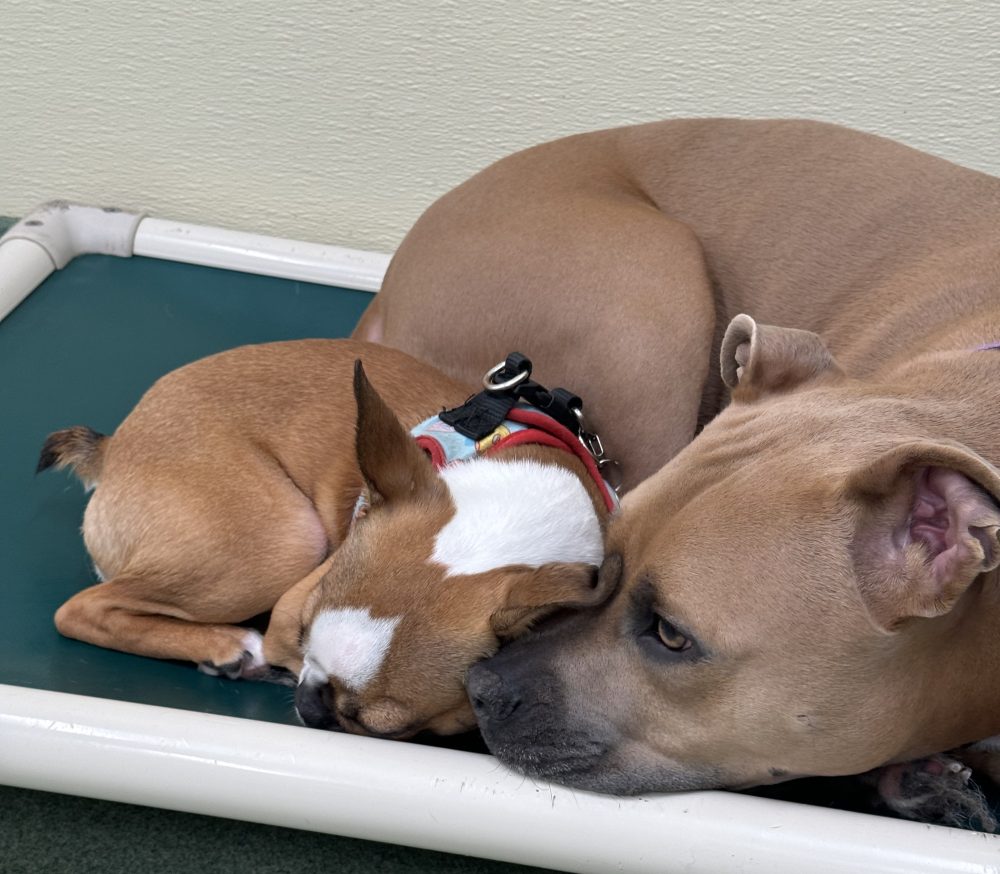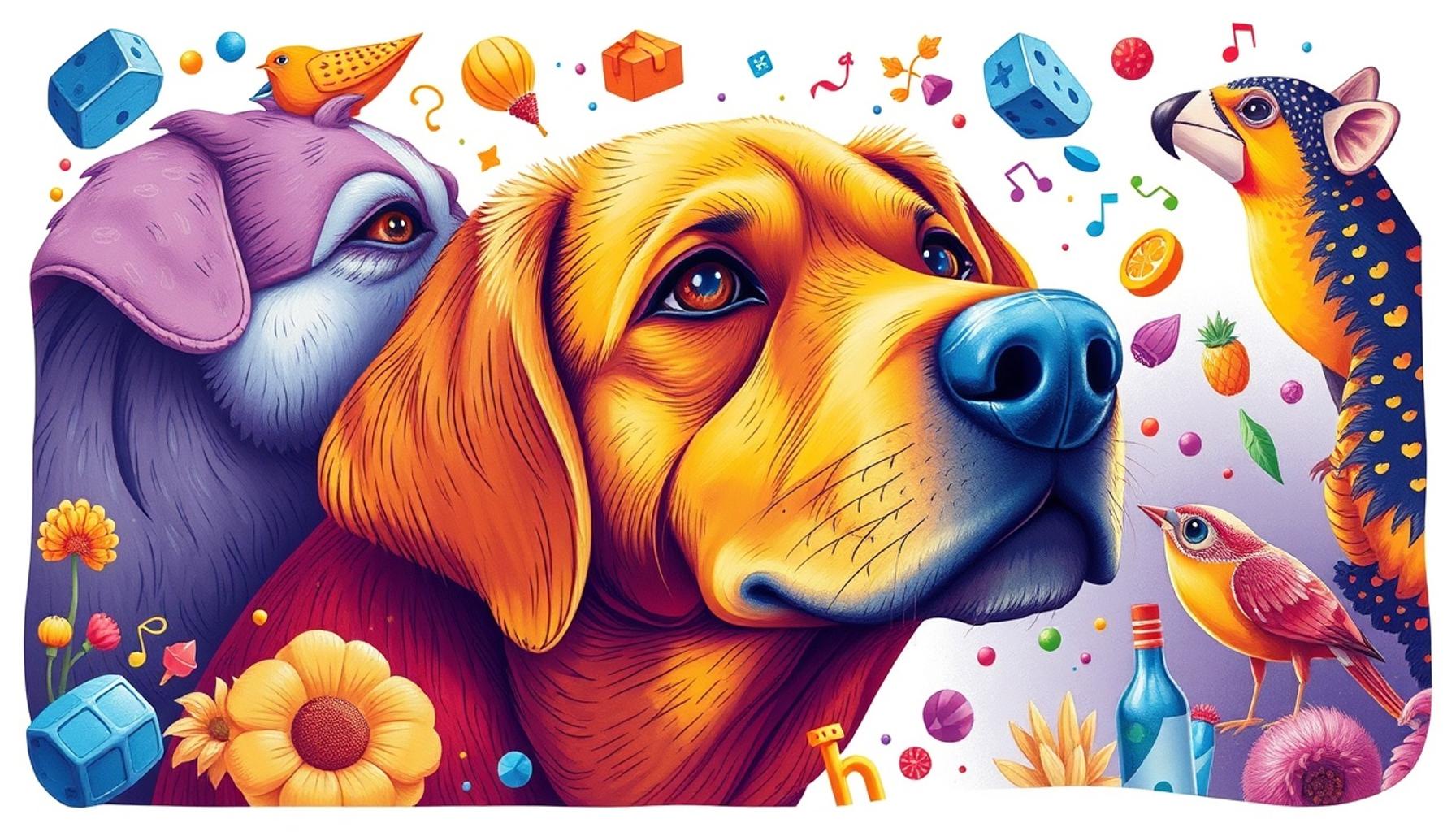Anti-Anxiety Behavior Training: Strategies to Help Pets Cope with Anxiety and Stress

Recognizing Symptoms of Pet Anxiety
Pets, much like their human companions, can experience moments of anxiety and stress. The impacts of these conditions can be profound, often manifesting in behaviors that are disruptive to both pets and their owners. Understanding and identifying symptoms of anxiety in pets is crucial for any responsible pet owner who wishes to promote a calm and happy household. Common indicators include:
- Excessive barking or meowing: Pets may vocalize more than usual, expressing their discomfort or frustration when anxious.
- Destructive behavior: Chewing furniture, scratching doors, or tearing up items can be an outlet for pent-up stress.
- Avoidance of social interactions: A pet avoiding friends, family, or even other pets might be attempting to cope with their anxiety by seeking solitude.
Factors Contributing to Pet Anxiety
Understanding the roots of anxiety in pets requires recognizing various potential triggers. Several common factors can contribute significantly to a pet’s stress levels, including:
- Changes in environment: Moving homes or changing family routines can disorient pets, as they thrive on stability and familiarity.
- Separation from their owners: Many pets, particularly dogs, are deeply affected by their owners leaving the house, leading to separation anxiety.
- Loud noises: Many pets are sensitive to sudden loud sounds, such as thunderstorms or fireworks, which can induce fear response.
Strategies for Managing Pet Anxiety
To alleviate these distressing issues, understanding specific strategies for anti-anxiety behavior training is vital. It not only addresses the symptoms but also equips owners with practical solutions to enhance their pets’ quality of life. Here are a few transformative techniques:
- Desensitization techniques: Gradually exposing pets to anxiety-inducing situations in a controlled manner can help them build tolerance and reduce fear.
- Positive reinforcement: Celebrating small victories and rewarding calm behavior with treats or affection can foster a more relaxed demeanor.
- Creating a safe space: Designating a quiet area in the home, complete with comforting items like blankets and toys, allows pets to retreat when feeling overwhelmed.
Implementing these strategies can significantly reduce anxiety levels in pets, leading to a more stable and peaceful home environment. As we continue to explore effective methods in the following sections, we aim to empower pet owners to create nurturing settings where their furry companions can thrive, even in stressful situations. Join us on this journey toward fostering a resilient and calm pet environment.
DISCOVER MORE: Click here to learn about the essential role of balanced nutrition in your pet’s health

Strategies for Managing Pet Anxiety
Pet anxiety is a common issue that many pet owners encounter, whether it arises from separation, loud noises, or changes in routine. The stress seen in our beloved companions can lead to destructive behavior and a decrease in their overall quality of life. To effectively address these distressing symptoms, understanding specific strategies for anti-anxiety behavior training is vital. These strategies not only tackle the anxiety itself but also provide practical solutions to enhance the emotional well-being of pets. Below are some transformative techniques that can make a significant difference.
- Desensitization techniques: Gradual exposure is key to helping pets build tolerance to anxiety-inducing situations. For instance, if a dog becomes anxious during thunderstorms, owners can start by exposing them to recordings of thunder at a low volume, offering treats or praise when the dog remains calm. Over time, the volume can be increased, allowing the dog to associate the sound with positive experiences instead of fear. This technique is grounded in behavioral psychology and requires patience, but the results can be profoundly beneficial.
- Positive reinforcement: Celebrating small victories is vital in training a pet to cope with anxiety. When a cat remains calm during a loud noise or a dog waits patiently before their food, rewarding them with treats or affection encourages a more relaxed demeanor. This approach harnesses the bond between pets and their owners and emphasizes the importance of consistent rewards for desired behavior. Over time, this encouragement can lead to notable changes in animal behavior and overall anxiety levels.
- Creating a safe space: Establishing a designated quiet area in the home can be incredibly beneficial for anxious pets. This safe haven should include comforting items like their favorite blanket, toys, and even a piece of the owner’s clothing to provide reassurance. For example, an indoor tent or a cozy corner can serve as a retreat when the pet feels overwhelmed, helping them regroup and restore their peace of mind.
- Regular exercise: Engaging pets in daily physical activities, such as walks, fetch, or play sessions, plays a crucial role in reducing anxiety. Regular exercise not only releases mood-enhancing endorphins but also provides an outlet for pent-up energy, which can be particularly beneficial for high-energy breeds. In the hustle and bustle of modern life, even short, consistent play sessions can yield significant behavioral improvements in pets.
- Mindfulness and calming techniques: Incorporating relaxation strategies, such as pet massage or aromatherapy, can create an atmosphere of tranquility for pets. Utilizing pet-safe essential oils, like lavender or chamomile, has been found to promote relaxation. Owners can diffuse these scents in the environment or apply diluted oils to the pet’s bedding, allowing the calming aromas to help reduce anxiety levels effectively.
Implementing these strategies can dramatically decrease anxiety levels in pets, resulting in a more stable and peaceful home environment. As we delve deeper into effective methods in upcoming sections, the goal remains to empower pet owners to cultivate nurturing settings where their furry companions can thrive, even amidst stress. Join us on this journey toward fostering resilience and calm for the pets we cherish, ensuring their happiness and well-being in our increasingly hectic lives.
| Strategies | Advantages |
|---|---|
| Desensitization Techniques | Helps pets gradually acclimate to anxiety triggers, resulting in less stress. |
| Positive Reinforcement | Encourages calm behavior by rewarding pets when they remain composed in stressful situations. |
| Environmental Enrichment | Stimulates pets mentally and physically, reducing feelings of anxiety. |
| Mindfulness and Relaxation | Promotes calmness through techniques such as calming music, massage, or aromatherapy. |
These strategies are vital for improving the overall well-being of pets experiencing anxiety. Utilizing methods like desensitization helps animals adapt to situations that may typically trigger stress responses. Positive reinforcement not only builds trust and strengthens the owner-pet bond but also creates a conducive atmosphere for learning.Moreover, environmental enrichment remains a crucial aspect as it caters to the innate instincts of pets, keeping them engaged and consequently less anxious. Implementing mindfulness and relaxation practices introduces pets to soothing experiences, establishing a routine that can effectively combat stress. Each of these approaches works collectively to foster a sense of safety, empowering pets to navigate their environments more confidently.
DIVE DEEPER: Click here to uncover more insights
Advanced Techniques for Anxiety Management in Pets
While the aforementioned strategies provide a strong foundation for reducing pet anxiety, more advanced techniques can help further refine the training process. These methods, grounded in scientific research and field experience, allow pet owners to take a more comprehensive approach to managing their companion’s stress and anxiety. By exploring these nuanced tactics, pet owners can create an environment rich in understanding and support, benefiting both the pet and the family dynamic.
- Behavior modification programs: Many professional dog trainers and animal behaviorists recommend structured programs that focus on modifying behavior through systematic approaches. Programs like “Clicker Training” use a handheld device that emits a sound when the pet exhibits desired behavior. This immediate feedback techniques helps reinforce good behavior while reducing anxiety over time. Engaging a certified trainer in such a program ensures that the techniques applied are tailored to the individual needs of the pet, creating an effective roadmap to overcome anxiety issues.
- Therapeutic products: In recent years, the pet industry has seen an influx of products designed specifically to alleviate anxiety in pets. These range from calming collars that release soothing pheromones to anxiety wraps that provide gentle pressure, mimicking the sensation of being swaddled. Pet owners can discuss these options with their veterinarians to determine the best therapeutic products tailored to their pet’s unique needs, resulting in a more targeted treatment approach.
- Structured routines: A consistent daily routine helps pets feel secure by providing predictability in their environment. Activities such as scheduled feeding times, regular walks, and designated playtimes establish a rhythm in the pet’s life, which builds confidence and reduces anxiety triggers. The simplicity of structure cannot be underestimated, as pets thrive in environments where they know what to expect, consequently cultivating a sense of stability and comfort.
- Socialization opportunities: Encouraging healthy social interactions with other animals and humans can greatly reduce anxiety in pets. Controlled environments, like dog parks or puppy classes, allow pets to explore and engage with others in a safe setting. By gradually exposing pets to social situations, they can develop new coping skills, improve their confidence, and learn to manage stress in the presence of distractions.
- Consultation with a veterinarian: In some instances, anxiety can be severe and may require deeper intervention. Consulting with a veterinarian or a veterinary behaviorist can lead to tailored advice and, if necessary, prescription medications that can work synergistically with behavior training. Understanding that anxiety can stem from underlying health issues is crucial; a multi-faceted approach that includes both behavioral training and medical consultation can offer optimal solutions for anxious pets.
By delving into these advanced techniques, pet owners take significant steps towards creating a tailored anti-anxiety plan. Each method emphasizes the importance of individual attention and understanding, allowing pets to thrive in a compassionate and secure home. It is essential to embrace a holistic approach to pet anxiety; doing so fosters not only resilience in our furry family members but encourages loving connections amidst the chaos of life. The journey toward effective anxiety management for pets is one that requires persistence, patience, and, above all, an unwavering commitment to their emotional health and happiness.
DIVE DEEPER: Click here to learn about the importance of socialization
Conclusion: Nurturing Calmness and Confidence in Pets
As we explore the various anti-anxiety behavior training strategies tailored to help our pets cope with anxiety and stress, it becomes increasingly clear that a multifaceted approach offers the most effective path forward. From the foundational techniques such as consistent routines and gradual socialization to advanced interventions like behavior modification programs, therapeutic products, and professional consultations, pet owners have an array of tools at their disposal. Each of these strategies is centered around one core principle: fostering a safe and understanding environment.
It is essential to remember that every pet is unique, with its own set of triggers and coping mechanisms. By recognizing and respecting these individual differences, owners can create a compassionate framework that promotes not only emotional health but also builds resilience. The integration of these methods can transform both the pet’s and the owner’s experiences, paving the way for stronger bonds and deeper connections.
Through persistence and an unwavering dedication to understanding our furry companions, we can facilitate a healthier, stress-free lifestyle for them. As we navigate this journey together, the importance of anti-anxiety training becomes increasingly evident—it is not merely a series of techniques, but a complete mindset shift that prioritizes the emotional well-being of pets as cherished family members. By implementing these strategies, we empower our pets to face life’s challenges with confidence, nurturing their capacity to thrive in an often chaotic world.
Ultimately, every step taken towards alleviating pet anxiety is a victory toward fostering happier, healthier lives. As we embark on this mission to improve our pets’ emotional landscape, we not only enhance their well-being but also enrich our own lives through the love and companionship they offer. Together, we can build a brighter future for our pets, where they can flourish free from anxiety and stress.



